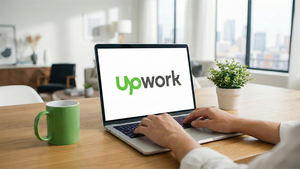
Procter & Gamble (NYSE: PG) recently disclosed its fiscal third-quarter 2025 results, presenting a nuanced financial picture that has stirred investor sentiment. While the consumer goods titan managed to surpass core earnings per share (EPS) estimates, its net sales declined by 2% to $19.8 billion, falling short of Wall Street's expectations. This mixed performance underscores the persistent challenges faced by the consumer staples sector amidst a volatile global economic and geopolitical landscape, prompting P&G to adjust its full-year guidance and signal strategic adaptations to navigate an increasingly discerning consumer market.
The immediate implications are clear: a market leader like P&G struggling with top-line growth, even while demonstrating operational efficiency, indicates deeper sector-wide pressures. Investors reacted with palpable disappointment, sending P&G's stock downwards post-announcement, as the sales miss overshadowed the EPS beat. This signals a re-evaluation of growth prospects within the defensive consumer staples category, where even established brands are battling slowing consumption and heightened price sensitivity.
P&G's Revenue Headwind and Profitability Resilience
P&G’s fiscal Q3 2025 results, announced on April 24, 2025, revealed net sales of $19.8 billion, a 2% decline from the previous year and a notable miss against analyst forecasts of approximately $20.36 billion. This shortfall was primarily attributed to an unfavorable foreign exchange impact of roughly 3% and the absence of benefits from minor brand divestitures in the prior year. Organic sales, a key metric excluding currency fluctuations and portfolio changes, managed a modest 1% increase, driven entirely by higher pricing, while organic volume and product mix remained neutral. This reflects a significant deceleration from the 7% organic growth recorded in Q1 FY2024.
Despite the revenue struggles, P&G demonstrated strong profitability. Core earnings per share (EPS) for the quarter rose 1% year-over-year to $1.54, slightly surpassing analyst estimates of $1.53. This earnings beat was largely a result of robust operational efficiencies, with the core operating margin improving by 90 basis points, reaching 23.0%. This improvement was fueled by 280 basis points of productivity savings, effectively offsetting a slight decline in core gross margin and ongoing commodity cost headwinds. The company’s Health Care segment was a particular highlight, achieving 4% organic sales growth, driven by personal health care volume and pricing, as well as innovations in oral care. Conversely, the Baby, Feminine & Family Care segment experienced the weakest performance, with a 1% organic sales decline.
The timeline leading up to this announcement saw analysts anticipating Q3 revenues of $20.3 billion and EPS of $1.55. Upon the release, Jon Moeller, P&G's Chairman, President, and CEO, acknowledged the "challenging and volatile consumer and geopolitical environment" and the need for "appropriate adjustments to our near-term outlook." Andre Shulten, CFO, highlighted pricing’s contribution to organic sales growth and the company's commitment to returning $3.8 billion to shareholders through dividends and share repurchases, including a 5% dividend increase—its 69th consecutive annual increase. However, investor disappointment over the sales miss led to P&G's stock falling 4.99% to $157.46 by market close on the day of the announcement.
A Shifting Landscape: Winners and Losers Emerge
Procter & Gamble's mixed fiscal Q3 2025 results signal a delicate dance within the consumer staples sector, where market share gains will be hard-won. The reliance on pricing for organic growth, coupled with flat volumes, indicates that consumer price sensitivity is a dominant force, creating distinct winners and losers among competitors, suppliers, and distributors.
Among the potential winners, competitors with stronger volume growth or a strategic focus on faster-growing emerging markets might capitalize on P&G's top-line struggles. Companies like Unilever (NYSE: UL), with a substantial presence in developing economies, could be better positioned to offset sluggish growth in established markets. Furthermore, nimble innovators and value-oriented brands are poised to gain traction. As consumers scrutinize their spending, brands that can offer compelling innovations at attractive price points, or robust value propositions, may attract those trading down from premium offerings. Select segment-focused competitors, particularly in areas where P&G demonstrated strength, could also benefit. For instance, Johnson & Johnson (NYSE: JNJ) in healthcare, or Church & Dwight (NYSE: CHD) with its portfolio of household and personal care brands, could see opportunities if P&G's challenges are more pronounced in other categories or if they can outperform in expanding health-focused segments. Efficient suppliers of cost-saving technologies and materials also stand to benefit from P&G's aggressive cost-cutting initiatives.
Conversely, the immediate losers include Procter & Gamble (NYSE: PG) itself, at least in terms of immediate stock performance and increased investor scrutiny. The downward revision of its full-year sales outlook puts pressure on the company to demonstrate consistent top-line improvement. Other consumer staples giants facing similar macroeconomic headwinds will also feel the pinch. Companies like Colgate-Palmolive (NYSE: CL), Kimberly-Clark (NYSE: KMB), Reckitt Benckiser (LSE: RKT), and Henkel AG & Co. KGaA (XTRA: HEN3), operating in comparable categories, are likely grappling with elevated input costs and price-sensitive consumers, leading to similar pressures on sales volume and profitability. Suppliers of commodity inputs, facing P&G's intensified focus on cost efficiency, may experience reduced demand or increased pressure to lower prices, squeezing their margins. Lastly, distributors with significant reliance on P&G's underperforming segments, such as Baby, Feminine & Family Care, might face slower growth or increased promotional activity to move inventory, further impacting their profitability.
Industry Shifts and Broader Repercussions
Procter & Gamble's fiscal Q3 2025 results are more than just a snapshot of one company's performance; they serve as a potent barometer for the broader consumer staples industry, highlighting pervasive trends and triggering significant ripple effects. P&G's sales miss, particularly its reliance on pricing to drive organic growth amid flat volumes, underscores a pivotal shift in consumer behavior and market dynamics.
This scenario aligns perfectly with the prevailing industry trend where pricing power has been the primary engine for organic growth since late 2021, often at the expense of volume. Consumers have grown increasingly price-sensitive, demonstrating a willingness to buy less, trade down to cheaper alternatives, or switch to private-label brands in the face of rising costs. P&G's struggles suggest that even the strongest brands are hitting the limits of their pricing power, indicating that volume declines are accelerating and outpacing price-driven gains. This amplified price elasticity marks a challenging environment for all CPG players. Moreover, while some forecasts anticipated a moderation of price increases and a rebound in volumes for 2025, P&G's performance suggests this volume recovery is proving more arduous than expected for industry leaders.
The ripple effects on competitors are substantial. A sales miss from an industry giant like P&G intensifies competition across the sector. Major players such as Unilever (NYSE: UL), Colgate-Palmolive (NYSE: CL), and Kimberly-Clark (NYSE: KMB) will likely analyze P&G's results to inform their own strategies, potentially leading to increased competitive pricing, enhanced value propositions, and a renewed focus on innovation to attract discerning consumers. This could precipitate further price wars and margin pressures across the industry. Furthermore, the sales miss validates the growing strength of private-label brands and smaller, agile CPG players, who can more quickly adapt to consumer demands for value. Retailers, already wielding significant leverage over CPGs due to their direct consumer connection and data insights, will likely exert even greater pressure on P&G for better trade terms and increased promotional support. Suppliers to P&G could also face heightened demands for cost reductions, adding strain to their operations, especially amidst ongoing supply chain volatility.
While not immediately triggering direct regulatory intervention, a sustained industry-wide reliance on pricing amidst consumer hardship could draw scrutiny. Governments may consider increased consumer protection measures or monitoring of pricing practices for essential goods if perceived as disproportionately burdening consumers. The potential for algorithm-driven pricing could also raise concerns about transparency. Historically, the CPG sector has navigated similar periods of inflation and economic downturns where companies faced tough choices between price increases and volume declines. The rise of private labels during economic stress is a recurring theme, demonstrating the erosion of brand loyalty. Major CPG players, including P&G itself, have a history of strategic re-evaluation, restructuring, and divestitures in response to slow growth or intense competition, with a consistent focus on innovation and efficiency to regain momentum. This current juncture represents another such historical inflection point for the industry.
Navigating the Road Ahead
The path forward for Procter & Gamble (NYSE: PG) and the broader consumer staples market appears to be one of cautious adaptation and strategic recalibration. P&G's fiscal Q3 2025 results, marked by revenue headwinds but resilient earnings, compel the company to solidify its long-term growth strategy amidst ongoing market volatility.
In the short term, P&G is set to intensify its focus on operational efficiency and cost savings through its previously announced restructuring plans. This includes a reduction of up to 7,000 non-manufacturing jobs over the next two years and exiting certain non-core brands and product categories in specific global markets. These efforts aim to generate $1.5 billion in annual savings, which will be critical in offsetting anticipated headwinds from commodity costs (approximately $200 million after-tax) and unfavorable foreign exchange rates (another $200 million after-tax) for fiscal 2025. Investors should expect these restructuring charges to temporarily impact EPS growth, but successful execution will be key to margin expansion. Muted consumer demand, particularly in the U.S., will remain a significant challenge, requiring P&G to maintain a strong value proposition across its product portfolio.
For the long term, P&G remains confident in the growth prospects of its core brands and markets. The company's integrated growth strategy centers on "irresistible superiority" across product, package, brand communication, retail execution, and value, coupled with continuous productivity improvements. Significant investments in R&D (around $2 billion annually) are directed towards premium and sustainable product innovation, such as Tide's Stain Guard Technology, to drive category growth. The "Supply Chain 3.0" initiative, leveraging AI to reduce logistics costs, underscores a commitment to balancing efficiency with innovation-driven growth. For the broader consumer staples market, 2025 is anticipated to remain challenging, with tariffs and a strong U.S. dollar potentially impeding international growth. However, some analysts foresee a gradual stabilization, with a potential rebound in late 2025 and into 2026 as the Federal Reserve potentially cuts interest rates, improving consumer sentiment and overall economic activity.
Potential scenarios range from an optimistic outlook where P&G's restructuring successfully fuels cost savings and market share gains through innovation, supported by a favorable economic environment. A pessimistic scenario involves prolonged inflation, intensified competition from private labels, and a deeper economic downturn further eroding consumer purchasing power and P&G's margins. The most likely base case is that P&G navigates these challenges with modest organic sales and EPS growth, driven by its strategic focus on superiority, productivity, and targeted innovation. The restructuring should deliver anticipated cost savings, partially offsetting external headwinds, and P&G will continue its robust shareholder returns, maintaining its defensive investment appeal while battling the continuous challenge of adapting to shifting consumer preferences and aggressive competition.
Conclusion: A Giant Adapting to a Dynamic World
Procter & Gamble's fiscal Q3 2025 results underscore a pivotal moment for the consumer staples industry: even the most entrenched market leaders are not immune to the evolving dynamics of a challenging macroeconomic and geopolitical environment. The key takeaway is a narrative of resilience in profitability, driven by disciplined cost management and operational efficiency, juxtaposed against a struggle for top-line growth amidst increasing consumer price sensitivity and foreign exchange headwinds. While the core earnings beat showcased P&G's internal strength, the missed revenue target served as a stark reminder of the external pressures reshaping consumer purchasing habits.
Moving forward, the consumer staples market is likely to remain highly competitive and volatile. P&G's reliance on pricing to drive organic sales growth reflects an industry-wide trend that is now facing the limits of consumer tolerance, pushing the sector towards a renewed focus on volume-driven growth, genuine innovation, and undeniable value. The ripple effects will continue to manifest as competitors vie for market share, private labels strengthen their foothold, and retailers leverage their data to optimize strategies. Regulatory scrutiny regarding pricing practices, while not immediate, could intensify if consumer hardship persists.
The lasting impact of P&G's performance will be its strategic pivots. The company's aggressive restructuring, involving job cuts and portfolio adjustments, signals a proactive approach to streamline operations and enhance agility. Its unwavering commitment to "irresistible superiority" through R&D and targeted innovation, coupled with consistent shareholder returns, reinforces its long-term vision.
Investors should closely monitor several critical factors in the coming months. Foremost are P&G's updated fiscal 2025 guidance for sales and EPS, which have been revised downwards, and any further adjustments in subsequent reports. The successful execution of its restructuring plans, particularly in achieving the projected $1.5 billion in annual savings, will be crucial for margin expansion. The company's ability to mitigate the substantial impacts of tariffs, commodity costs, and unfavorable foreign exchange will be a key determinant of its profitability. Furthermore, watching broader consumer demand trends, especially in key developed markets, and evaluating whether P&G's innovation strategy translates into sustainable volume growth will be essential. Finally, P&G's continued commitment to returning capital to shareholders through dividends and share repurchases, amounting to $16-17 billion for fiscal 2025, will remain a strong signal of its financial health and management's confidence in its long-term outlook. While the immediate horizon presents challenges, P&G's strategic adaptations aim to solidify its position in an increasingly dynamic global marketplace.






